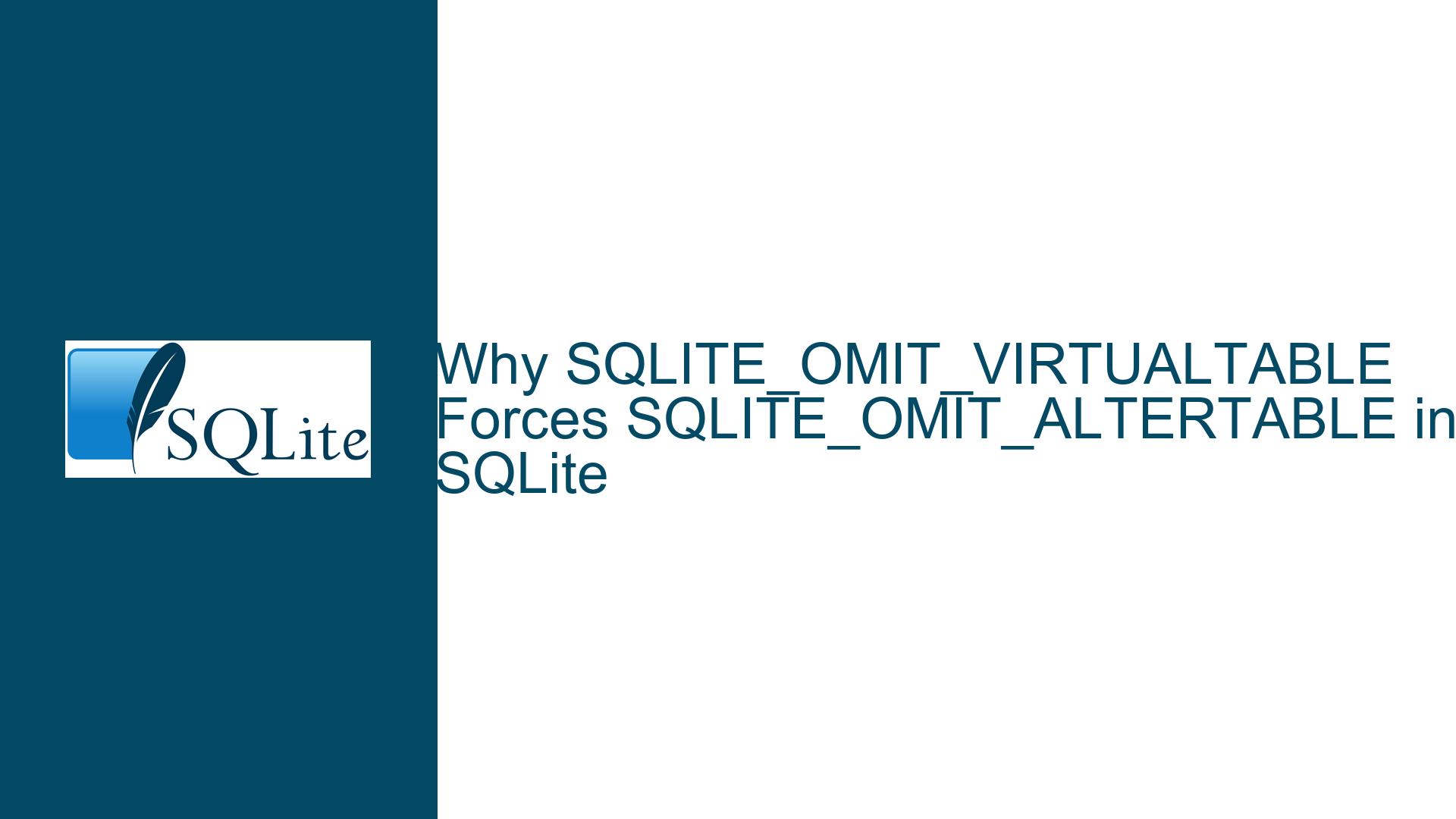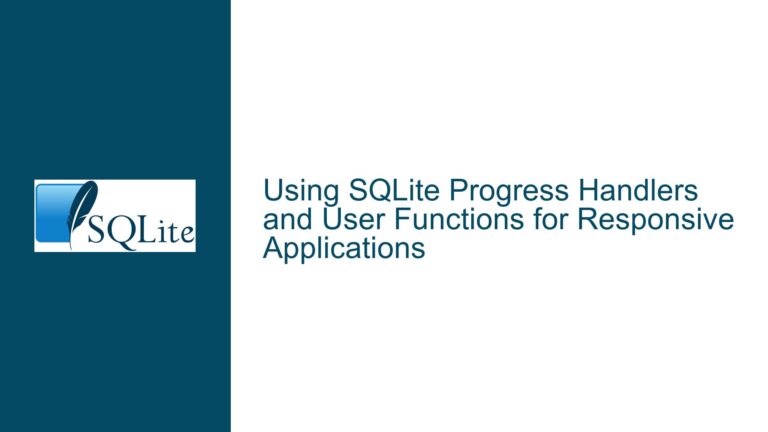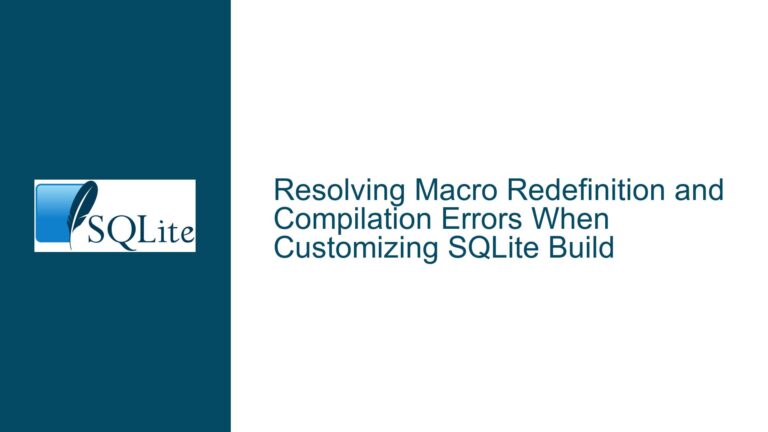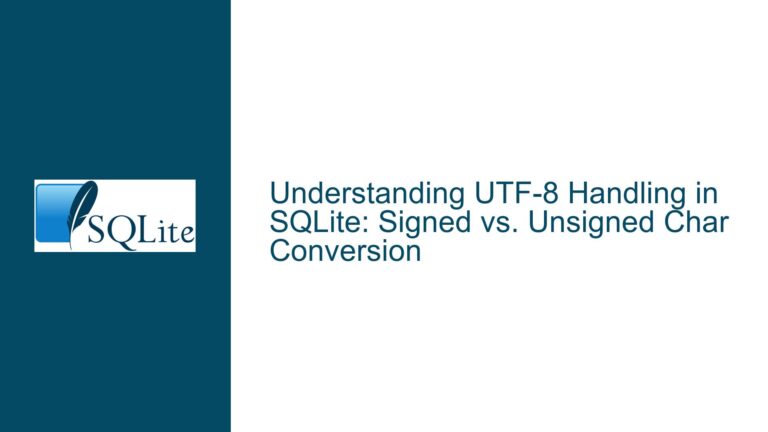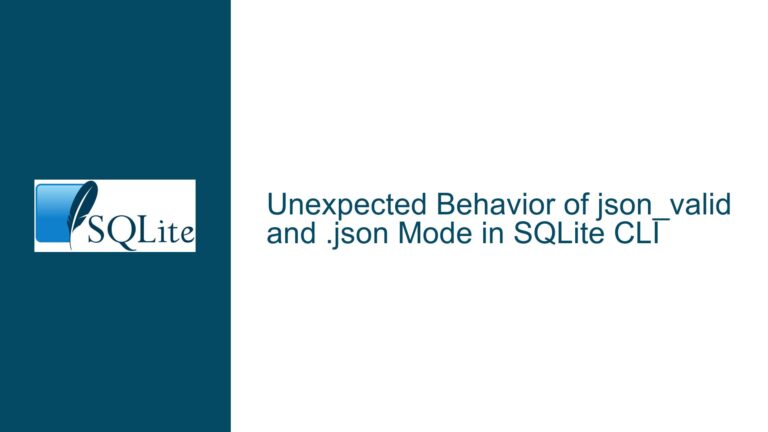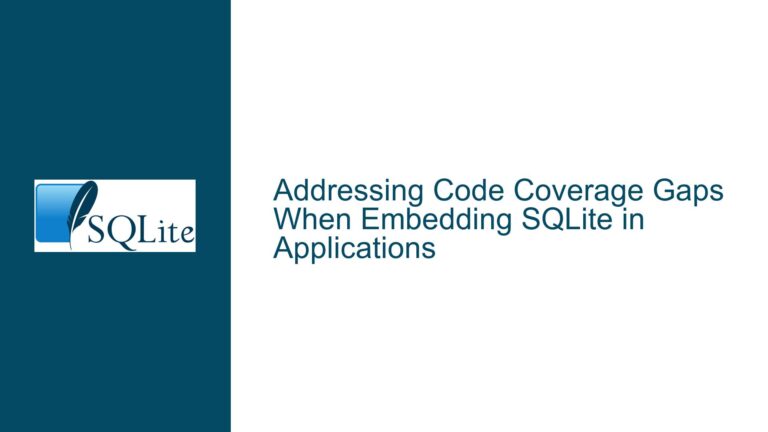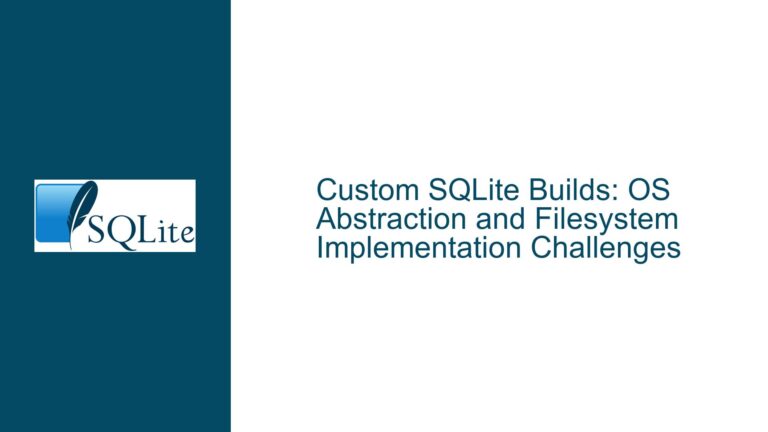Why SQLITE_OMIT_VIRTUALTABLE Forces SQLITE_OMIT_ALTERTABLE in SQLite
The Dependency Between Virtual Table Omission and ALTER TABLE Functionality
Issue Overview: Compile-Time Macros and Feature Interdependencies
SQLite provides a suite of compile-time options (macros) that allow developers to exclude specific features to reduce binary size or meet custom requirements. Among these, SQLITE_OMIT_VIRTUALTABLE and SQLITE_OMIT_ALTERTABLE are two such macros. The former disables support for virtual tables, a mechanism for defining custom table-like interfaces backed by user-defined logic. The latter disables the ALTER TABLE command, which modifies table schemas.
The code snippet from SQLite’s source (sqlite3.c) explicitly states that defining SQLITE_OMIT_VIRTUALTABLE automatically triggers the definition of SQLITE_OMIT_ALTERTABLE, even if the latter is not explicitly specified. This implies a hard dependency: disabling virtual tables forces the disabling of ALTER TABLE. At first glance, this seems counterintuitive, as virtual tables and schema alteration appear unrelated. However, this dependency arises from SQLite’s internal implementation details, specifically the reliance of certain ALTER TABLE operations on components implemented as virtual tables.
The critical link between these two features is the pragma_quick_check functionality, which is internally implemented as a virtual table. PRAGMA quick_check is a diagnostic command that verifies database integrity. Its table-valued function variant (accessible via pragma_quick_check) is designed to return results in a tabular format, leveraging SQLite’s virtual table infrastructure. When SQLITE_OMIT_VIRTUALTABLE is defined, all virtual table support is stripped, including the pragma_quick_check virtual table. Since ALTER TABLE operations depend on pragma_quick_check for validation in specific scenarios, the absence of this virtual table renders ALTER TABLE incomplete or unsafe. To prevent partial or broken functionality, SQLite’s build system enforces the omission of ALTER TABLE when virtual tables are disabled.
Root Cause: Internal Reliance on Virtual Table Implementations
The interdependence of SQLITE_OMIT_VIRTUALTABLE and SQLITE_OMIT_ALTERTABLE stems from three key factors:
pragma_quick_checkas a Virtual Table
Thepragma_quick_checkcommand is not implemented as a traditional PRAGMA but as a pragma table-valued function. This design choice allows it to return multiple rows of data, making it compatible with SQL queries. Table-valued functions in SQLite are implemented using eponymous virtual tables—virtual tables that automatically register themselves and can be queried like regular tables. WhenSQLITE_OMIT_VIRTUALTABLEis defined, the entire virtual table subsystem is excluded, including the infrastructure for eponymous virtual tables. Consequently,pragma_quick_checkbecomes unavailable.ALTER TABLEDependency on Integrity Checks
CertainALTER TABLEoperations, such as adding columns with constraints or modifying table structures, require validation to ensure schema changes do not corrupt existing data. For example, adding aCHECKconstraint to a table necessitates verifying that all existing rows satisfy the new constraint. This validation is performed usingpragma_quick_check. Ifpragma_quick_checkis unavailable due to the omission of virtual tables, SQLite cannot safely execute theseALTER TABLEoperations. Rather than allowing partially functional or unsafe schema modifications, SQLite disablesALTER TABLEentirely.Build System Safeguards
SQLite’s build system enforces logical consistency between features. If a high-level feature (e.g.,ALTER TABLE) depends on a lower-level subsystem (e.g., virtual tables), the build system automatically disables the high-level feature when the subsystem is excluded. This prevents scenarios where enabling a feature would lead to runtime errors or undefined behavior due to missing dependencies.
Resolution: Addressing Virtual Table and ALTER TABLE Conflicts
To resolve the conflict between SQLITE_OMIT_VIRTUALTABLE and SQLITE_OMIT_ALTERTABLE, developers must either accept the loss of ALTER TABLE functionality or retain virtual table support. Below are detailed steps to diagnose, understand, and mitigate this issue:
1. Diagnosing the Dependency Chain
- Review SQLite Compile-Time Options: Examine the SQLite compilation flags to confirm whether
SQLITE_OMIT_VIRTUALTABLEis defined. If it is, the build process will automatically defineSQLITE_OMIT_ALTERTABLE, as seen in the code snippet. - Inspect the
ALTER TABLEImplementation: Study SQLite’s source code (e.g.,alter.c) to identify calls topragma_quick_checkor other virtual table-dependent functions. For instance, thesqlite3AlterFinishAddColumnfunction invokes integrity checks that rely onpragma_quick_check. - Test
ALTER TABLEOperations: Attempt to executeALTER TABLEcommands (e.g.,ALTER TABLE tbl ADD COLUMN col INT) in a build withSQLITE_OMIT_VIRTUALTABLEdefined. Observe compilation errors or runtime failures, which confirm the dependency.
2. Retaining ALTER TABLE Without Virtual Tables
- Modify the Build Configuration: Remove
SQLITE_OMIT_VIRTUALTABLEfrom the compile-time flags. This ensures virtual table support remains enabled, preservingpragma_quick_checkand allowingALTER TABLEto function. - Conditional Code Overrides: For advanced use cases, modify the SQLite source code to decouple
ALTER TABLEfrompragma_quick_check. This involves rewriting the integrity-checking logic to use alternative methods (e.g., custom validation routines). However, this approach is highly discouraged due to the risk of introducing data corruption. - Use a Custom Build of SQLite: If binary size is a concern, create a custom build that includes virtual tables but excludes other non-essential features (e.g.,
SQLITE_OMIT_AUTOINCREMENT). This balances size constraints with the need forALTER TABLE.
3. Alternatives to ALTER TABLE
If retaining virtual tables is not feasible, developers can use alternative methods to modify table schemas:
- Create a New Table: Copy data from the old table to a new table with the desired schema. This involves:
BEGIN TRANSACTION; CREATE TABLE new_tbl (...); INSERT INTO new_tbl SELECT ... FROM old_tbl; DROP TABLE old_tbl; ALTER TABLE new_tbl RENAME TO old_tbl; COMMIT; - Use
CREATE INDEXorCREATE VIEW: For some schema changes (e.g., adding indexes or derived columns), views or indexes can partially emulateALTER TABLEfunctionality. - Leverage External Tools: Tools like
sqlite-utilsor ORM frameworks often provide schema migration utilities that automate the table-reconstruction process.
4. Understanding Virtual Table Internals
To grasp why pragma_quick_check is a virtual table:
- Study Eponymous Virtual Tables: These are virtual tables that automatically register themselves and require no explicit
CREATE VIRTUAL TABLEstatement. Thepragma_quick_checkfunction is implemented as an eponymous virtual table, allowing it to be queried directly (e.g.,SELECT * FROM pragma_quick_check('main')). - Analyze the
pragma_quick_checkSource Code: In SQLite’s source,pragma.cdefines thepragma_quick_checkhandler, which initializes a virtual table module (pragmaVtabModule). This module implements thexConnectandxBestIndexmethods to process the pragma arguments and return results.
5. Mitigating Binary Size Concerns
Developers often disable virtual tables to reduce binary size. To minimize size while retaining ALTER TABLE:
- Use Compiler Optimization Flags: Enable link-time optimization (LTO) and strip unused symbols.
- Exclude Other Features: Disable non-essential features like JSON1 (
SQLITE_OMIT_JSON) or FTS3/4 (SQLITE_OMIT_FTS3). - Evaluate Feature Necessity: Confirm whether virtual tables are truly unnecessary for the application. Many extensions (e.g., FTS5, R-Trees) depend on virtual tables, so their exclusion may have broader implications.
By understanding the interplay between virtual tables and schema modification commands, developers can make informed decisions about SQLite’s compile-time configuration and employ workarounds when necessary. This ensures a balance between functionality, binary size, and application requirements.
